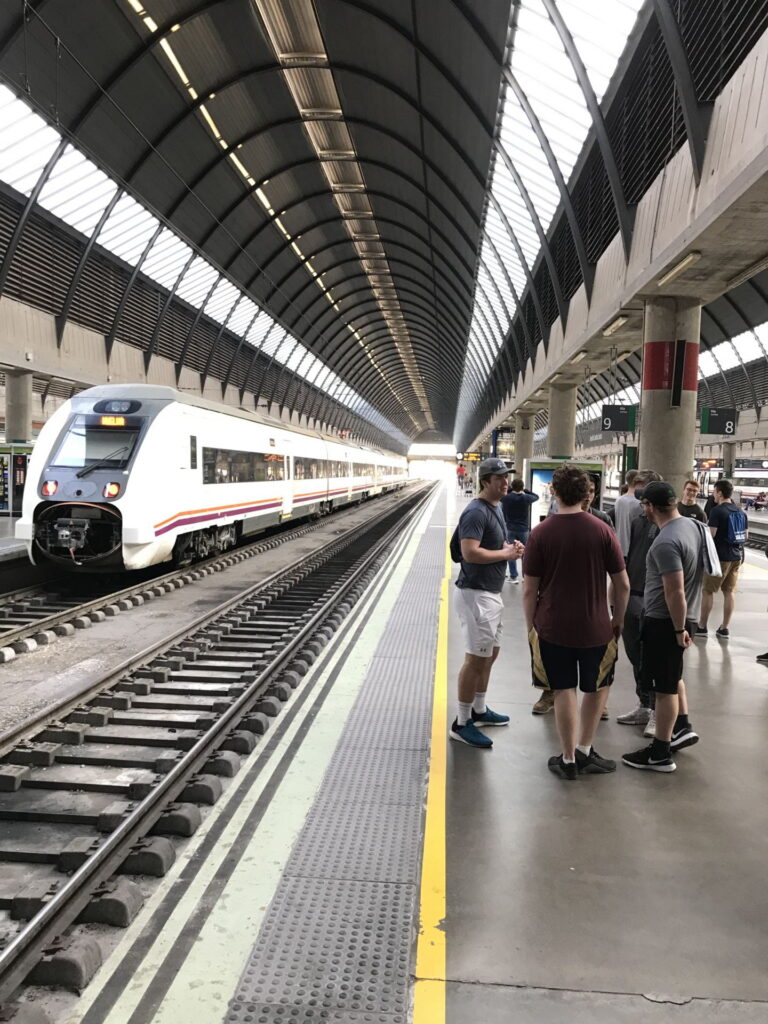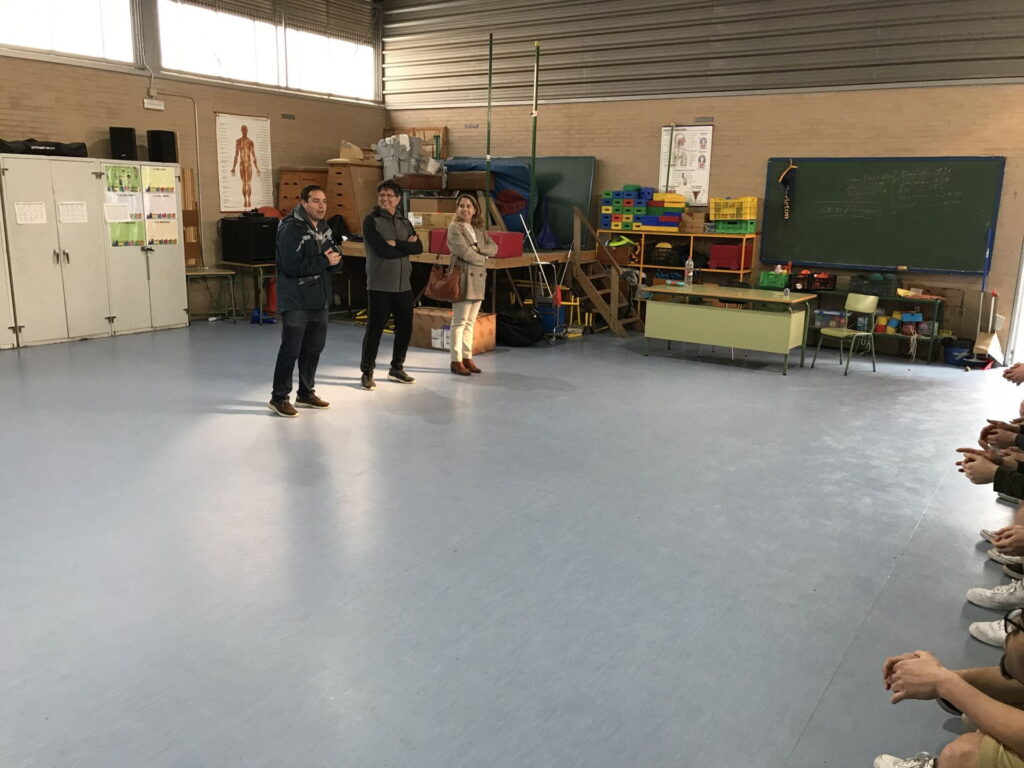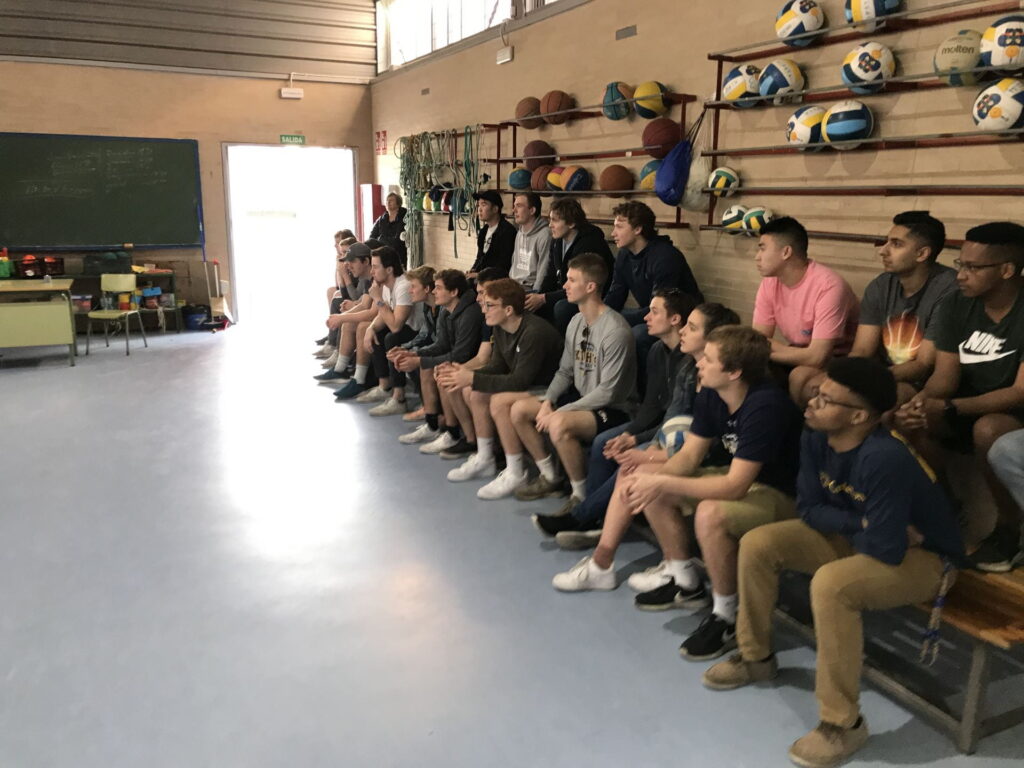As we got off the train in Bellavista, we had no idea what to expect from our first visit to Lora Tamayo. Walking through the neighborhood, we searched the buildings for clues as to what we had gotten ourselves into-but to no avail. Once we got onto the grounds of the school, and unloaded the gear we would be using over the next few weeks, we began to relax and get comfortable. We played in the school gymnasium as we waited to meet Raphael who is the head of the institution. When he arrived, he had also brought the neighborhoods’ government representative to meet and speak to us as well. That was our first clue as to how big of a deal our presence is to the community.
After introductions and general information, we had the chance to walk through some of the classrooms and get our first glimpse of the students. They looked at us with a mix of admiration, excitement, awe, and probably some nervousness too. From there, we were given a presentation on the history of the school and got a sense of just how historic and important the school is. After a quick snack, it was time to go outside and meet the kids in an environment where we could truly start to connect with them–the playground.
At first, we were overwhelmed. The students swarmed us and the language barrier was intimidating. It didn’t take long for the power of sports to take over, though. From basketball, to dodgeball, to soccer, we began to play with the kids and get to know them. Some of the children came with paper for us to autograph and others made it their mission to dominate us in their chosen sport. But all in all, it was an incredible experience to first learn about the institution and then to spend time with the kids. All of us are very excited to go back and continue to build a mentoring relationship with them through sports!





















































